
Are you ready to put in some serious milage as you up your hiking game? Maybe you are keen on multiday hikes, where you camp overnight. Or, perhaps you want to conquer some high peaks. All of this requires you to move out of your comfort zone, build hiking stamina, as well as the mental strength to keep going even when you feel tired.
Here’s some tips on building hiking stamina, so you are fit and ready for your next adventure!
Find your base fitness level
We all start from somewhere. Whether you are used to daily five mile walks, or are a weekend hiker who just covers a couple of miles, we all have our baseline hiking fitness.
To find out yours, consider what distances you already feel comfortable walking. From this, you can aim to gradually increase hiking stamina by upping the distance each week, until longer distances begin to feel more comfortable.
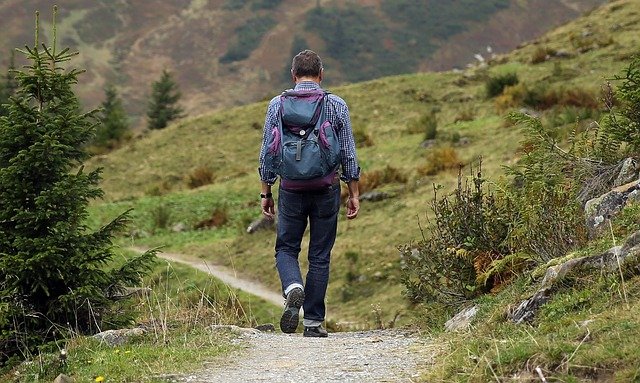
Vary the Terrain
Walking on fairly level ground is completely different to mountainous terrain. Challenge yourself and build up your hiking stamina by adding more hills to your routes. This will improve your fitness levels and help you get ready for that long distance hike.
Physical Training for Hiking
Nothing worth doing comes easily to most of us. If you want to increase your hiking stamina and enjoy those longer walks, you have to put in the training. This can be divided into two areas – weight training and cardio.
Weight training, either using weights or exercises that use your body weight, will help you gain strength and improve lung capacity. It will also increase the strength of your ligaments and joints. Not only does this help improve hiking stamina, but it will also decrease the risk of injury along the trail.
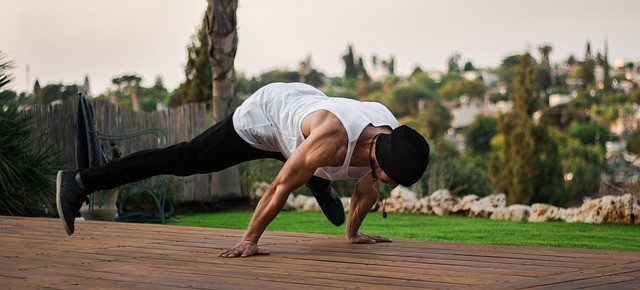
As for cardio, try adding one or two sessions to your week to begin with. This could mean jogging, brisk walking, even dancing. Anything that gets your blood pumping and gets you breathing harder. Cardio training makes your body use oxygen more efficiently, strengthens joints and builds stamina, helping you to smash those extra miles on your hike.
If you are carrying a few extra pounds in body fat, then increasing your training will help you lose weight and build muscle. This means those longer distance hikes feel easier.
Vary your Pace
Another quick way to increase stamina for long distance hiking is to switch between paces when you go for walks. Aim to do five or ten minutes of a brisk, fast pace, before slowing to recover for another ten minutes. Just as with runners, adding ‘sprints’ to your usual walking pace will help you improve your fitness.
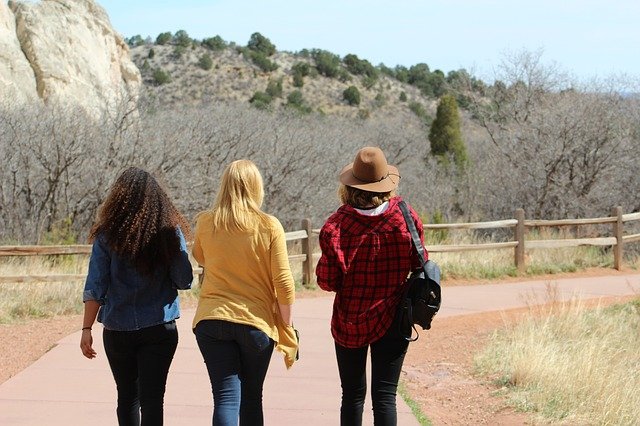
Using a Pack when Hiking
If you are hiking long distances, especially camping overnight, you are going to want some kit with you. That said, keeping your pack as light as possible will help take the weight off your feet – literally! Some people tend to overpack, and then end up carrying around stuff that never gets used.
Here a guide to packing light for long-distance hikes that may be helpful. Take lightweight essentials and a some small extras as a morale boot when the trail gets tough, and your set for success.

Foot Care when Hiking
To make sure your feet can put in the miles, they must be strong, in good condition and have suitable hiking boots. For example, if you have a wide foot, don’t try hiking in normal width boots. Try wide fit hiking boots instead. Also, go for good quality hiking socks.
Strengthen the muscles and ligaments in the feet by walking barefoot on rocks or other uneven surfaces. You can also slowly raise yourself onto your toes and lower back down again a few times per day, as well as scrunching up your toes and then releasing them. This helps to strengthen the muscle groups all over the foot, including the arch, so you can hike for longer without pain.
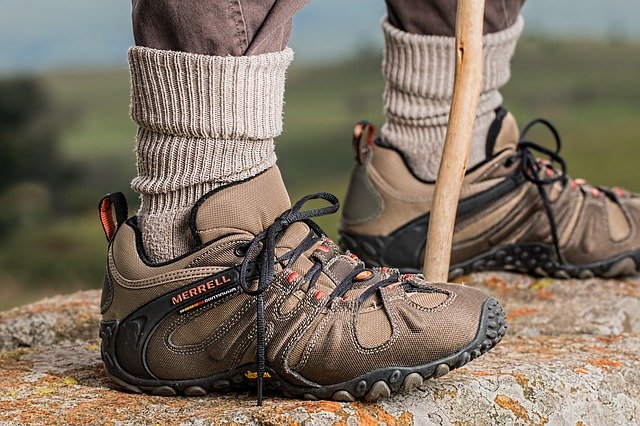
If you have blisters, or foot conditions such as verrucae or corns, get them treated and allow to heal before beginning a long hike.
Fuel for Hiking Stamina
The best foods to take hikes are those that are compact to pack, yet high in calories, protein, heathy fats and carbohydrates.
Nuts and homemade trail mixes, with a variety of seeds and dried fruits are great for snacking. Small packs of peanut butter will give you a mid hike energy boost, together with crackers and protein bars. Jerky and fruit leathers are also ideal as they are nutritious, give you an energy boost and are lightweight.
For meals, pack dried foods such as noodles, soup, rice, oatmeal, or any dish that can be made by adding water! Small cans of tuna are a great way to get some ‘fresh’ protein, without adding too much weight to your pack. The odd apple can sit in your backpack without getting too damaged, giving you the chance of some fresh fruit.

You can also supplement your diet as you walk by foraging for wild fruits, berries and nuts as you go. Make sure you have the correct identification before eating, and if in doubt, leave it out!
Mental Strength for Long Hikes
As with anything, a tough trail sorts the men from the boys, and the women from the girls. Sometimes, even in you have trained and prepared, you are going to mentally hit a wall. Your legs/back/feet/shoulders might ache, the weather turns nasty, and you are still miles from your next camp. This is where you need the mental strength to get through.
Metal resilience is a funny thing. It’s about finding the positives and getting on with the job. Having the right hiking partners around you can help. If you are solo hiking, you’ll need to find your own inner grit and determination to conquer those hills!
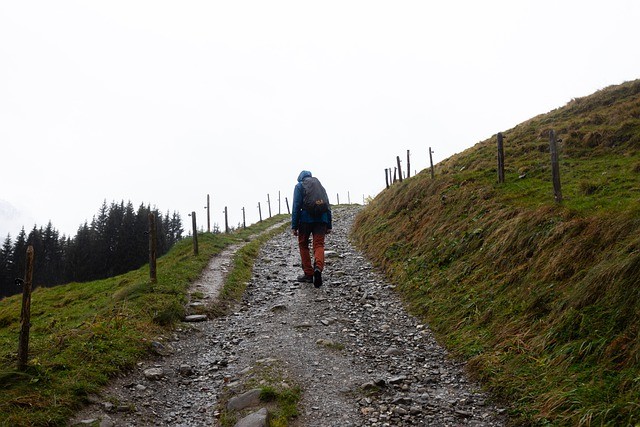
So, how do you build mental toughness? That is a personal quest for everyone.
It helps to remember that it is supposed to be tough, that its normal to feel the way you do. Keep your eye on the bigger picture. Remember that your body is a lot stronger than you know and is capable of walking, provided you are not injured or ill.
Self-care on the trail is important, eat if you are hungry and stay hydrated. This will help keep you in the positive frame of mind needed to tackle those hard miles on the hike.
Pick a suitable hike
So you’ve committed to your first 50 mile hike, with a couple of overnight stops. Congratulations! Remember though, when you are getting started on long distance, choose a hiking route that is suitable for your abilities. The Scottish mountains may sound appealing, or even your dream long distance hiking trails abroad, but the terrain and distance may be too much if you are not used to it.
If you want to enjoy long distance hiking, choose flatter routes to begin with, such as the Cotswold Way or the Thames Path. Then with a few ‘easy’ hikes done, you will have more confidence on the tougher ones.
When you choose to do a long distance hike, make sure you have enough time to train and prepare. Then you will really enjoy every mile!
